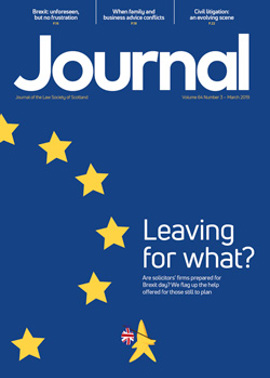When the wheels come off
Around the turn of this decade the Supreme Court’s decision in Autoclenz v Belcher [2011] UKSC 41 paved the way for many employment status disputes to follow, with many focused on the so-called “gig economy”. Autoclenz emphasised the need for contractual documentation to reflect the reality of the relationship if the declared status was to hold good.
To add to the list of Uber drivers, Pimlico Plumbers and Deliveroo cyclists, we have also seen disputes in the art world (artists and lecturers suing national galleries alleging that they are not self-employed and have employed or worker status), and we have now had the outcome of the first major challenge to employment status in the sports world, with the decision of the Manchester employment tribunal in Varnish v British Cycling (ET2404219/2017). In the 43-page judgment, Varnish was found to be in a position more akin to a university student, receiving support and training to help her improve and perform to the best of her abilities, than that of a professional footballer or similar. The dominant purpose of the contract was to enable Varnish to be the best athlete she could possibly be, rather than to work and provide service to an employer.
True reflection
Varnish’s claims arose from the termination and non-renewal of her agreement with British Cycling, when she was a professional cyclist with the GB cycling team. Under that relationship, Varnish received the benefit of services. Funding was provided from UK Sport by way of a grant. Varnish did not receive any money from British Cycling. The preliminary hearing had to determine whether Varnish was (i) an employee or worker, within the meaning of the Employment Rights Act 1996, s 230, and/or (ii) an employee under a contract of employment, a contract of apprenticeship or a contract to do work personally within the meaning of the Equality Act 2010, s 83(2)(a), by either British Cycling or UK Sport or both, under a tripartite agreement. The tribunal determined that Varnish did not have employee or worker status and accordingly, they did not have jurisdiction to hear her claims.
Central to the tribunal’s findings was an analysis of the funded athlete relationship. It determined the relationship lacked mutuality of obligation, as Varnish did not work in exchange for a wage; her primary responsibility was to train, in the hope that she would be selected to compete for British Cycling. There was no guarantee that she would receive an award from UK Sport; this was considered and determined separately to British Cycling’s elite programme. Control was a significant feature of the relationship; Varnish’s training programme was governed by an individual rider plan, and what she ate, and how, when and where she trained were closely influenced and controlled by British Cycling.
The “Athlete Agreement” governing the relationship with Varnish accurately reflected the true arrangements between the parties. There was no obligation on Varnish to accept the coach supplied, and the services provided to her were not automatic or taxable. Consequently, Varnish was not an “employee” or “worker” further to the 1996 Act. The relationship, properly categorised, did not reflect a worker relationship under the 2010 Act, as British Cycling was more akin to a university providing services, facilities and benefits to Varnish rather than a working relationship. UK Sport did not provide Varnish with work; they provided a tax-free grant to aid her to fulfil her dreams as an athlete. UK Sport exerted little control over her, except for requiring a maximum of three appearances per annum.
Comment
A word of caution must exist in that this is a decision at tribunal level and so not binding; but also it was noted that it may be possible for part 3 of the 2010 Act (specifically s 29) to be used by an athlete in such a relationship, alleging, where the circumstances warrant, discrimination arising from the provision of a service. It is possible that a different athlete could offer different facts, arising from their own relationship with their governing body, that could in theory lead to a different outcome and a worker or employee relationship.
Nonetheless the decision is helpful in illustrating how the relationship funded athletes have, differs to typical team sports (such as football, rugby, hockey etc), where the relationships are more clearly defined as employed relationships. Equally, professional individual sports, such as tennis or golf, typically do not involve any funded, grant, or team relationships for elite athletes.
The outcome will be welcomed by sports governing bodies and stakeholders in sport who would see the current arrangements as the most appropriate arrangements to support athlete development within Scotland and the wider UK.
In this issue
- How will Brexit affect my mother-in-law?
- Settling the debate on sequestration
- Taking wellbeing seriously
- How will personal data continue to flow after Brexit?
- Buildmark, and a little extra help for NHBC
- Reading for pleasure
- Opinion: Laurie Anderson
- Book reviews
- Profile: Lord Mackay of Clashfern
- President's column
- People on the move
- Is your legal software ready to remain compliant in 2019?
- What's the deal?
- Ready to leave?
- A tapering opportunity
- Brexit: no dealbreaker either
- The business of divorce
- Trailblazing 12
- Cohabitants: rebalancing the law
- Litigation: an evolving scene
- Chain transactions
- When delay is not fatal
- Data protection – deal or no-deal?
- Two cases and an order
- Reshaping trade mark law
- When the wheels come off
- Parentage or privacy?
- Access right, right of access or right of way?
- Team of one
- Public policy highlights
- OPG update
- Housing specialism added to accreditation list
- At the boundary's edge
- Keep the dual role
- Executry and trust accounting: new guidance
- Moving nightmares
- Accredited paralegal update
- Sign up for conference
- Accredited Paralegal Committee profile
- Ask Ash






